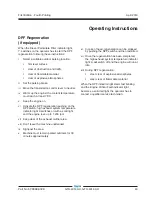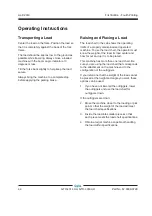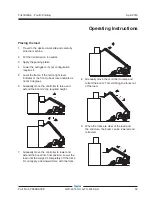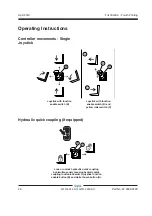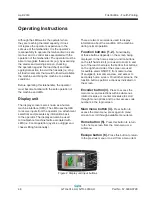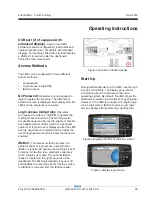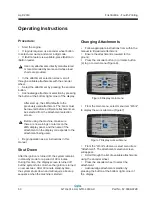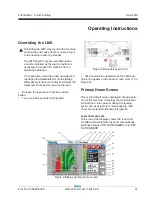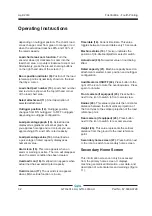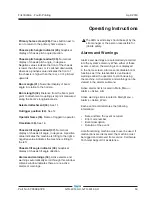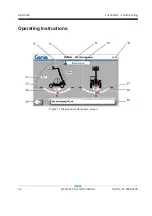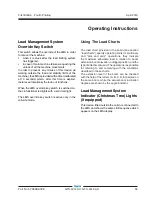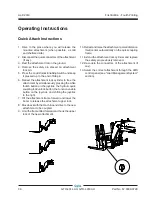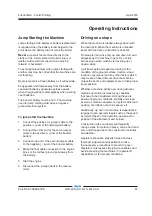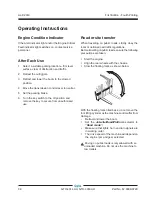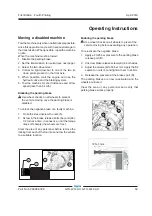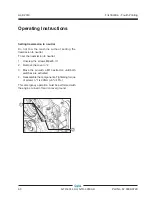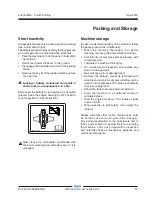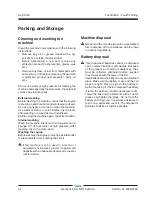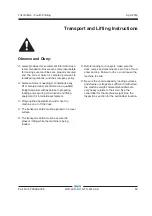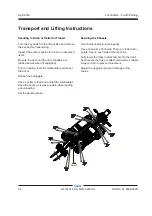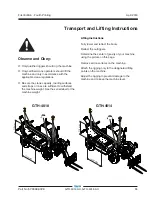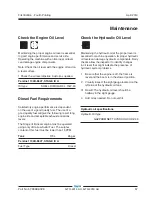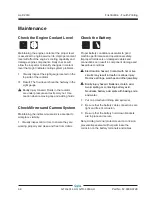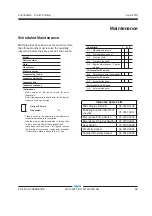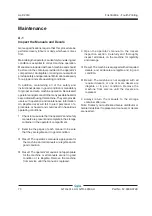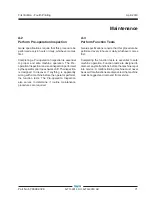
April 2019
First Edition - Fourth Printing
Part No.
57.0009.0729
GTH-4014 AU, GTH-4018 AU
57
Jump Starting the Machine
Jump starting at the battery or battery replacement
is required when the battery is discharged to the
point where the battery will not crank the starter.
Never
jump start the machine directly to the
starter or the starter solenoid. Serious injury or
death could result from the machine moving
forward or backward.
To avoid personal injury when jump starting with
another machine, be certain that the machines are
not touching.
Never jump start a frozen battery as it will explode.
Keep sparks and flames away from the battery.
Lead acid batteries generate explosive gases
when charging. Wear safety glasses when working
near batteries.
The booster battery must be 12V. The machine
used for jump starting must have a negative
ground electrical system.
To jump start the machine
1 Connect the positive (+) jumper cable to the
positive (+) post of the discharged battery.
2 Connect the other end of the same jumper
cable to the positive (+) post of the booster
battery.
3 Connect one end of the second jumper cable
to the negative (-) post of the booster battery.
4 Make the final cable connection to the engine
block or the furthest ground point away from
the battery.
5 Start the engine.
6 Disconnect the jumper leads in the reverse
order.
Driving on a slope
When the machine is loaded, always travel with
the load uphill. When the machine is unloaded,
travel with the forks or attachment downhill.
On steep terrain, drive only up and down hill, and
always keep the machine in gear. Do not turn
across slope when machine is traveling up or
down a slope.
Limit travel path and speed according to the
condition of the ground surface, traction, slope,
location of personnel and any other factors which
may create a hazard. Never drive the machine
unless the boom and equipment are in their proper
travel position.
Whether a machine will tip over during dynamic
machine operation involves many variables
that need to be considered. Among these are
pavement/ground conditions, stability and slope,
as well as machine equipment, operator skill, load
position, tire inflation, machine speed, etc.
Additionally, tip over of a machine is dependent in
large part upon operator inputs such as the speed
and smoothness of the operation as well as the
position of the attachment and its load.
Construction sites and roads will frequently
change slope from place to place, can be hard and
soft, and change due to the construction activities
and weather.
Operators should be properly trained and use
their best judgment and experience to take
the necessary precautions to prevent tip over.
Operators must assess the job-site variables and
avoid exceeding the machine’s (or operator’s)
capabilities for terrain and conditions.
Operating Instructions

